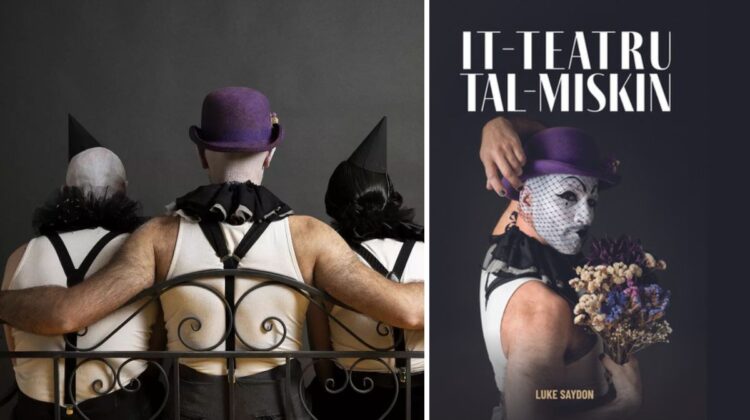
When I first watched Luke Saydon’s It-Teatru Tal-Miskin, it was very much a breakthrough for me. I only caught it on its third run at the Bluebox in Msida, after literally months of hearing everyone raving about it. Despite the general enthusiasm I encountered, my expectations weren’t particularly high. On the contrary, they were lower than usual. Musical theatre in Maltese was always going to be a tough one to pull off, I figured.
Well, I was blown away pretty much as soon as the first song started. Now, Saydon has published a book companion. Also called It-Teatru Tal-Miskin, it created considerable excitement among those who, like me, had not had enough of Ħal Fern, the fictional village where the production is based.
Despite my fondness for the subject at hand, I still approached the publication itself warily. I am not a fan of reading theatre scripts; without all the frills the stage, actors and cast bring, I tend to find them dry and prefer to read a regular book. Controversial opinion, I know. This was likely to be even more true of a musical.
I immediately realised, however, that this book wasn’t limited to a mere theatre script. It is more of a comprehensive companion to the whole production. Saydon’s Foreword sets the tone, as does the next chapter – the cheeky Kemm Zekzu, which reproduces the press reviews (including the one I had done at the time) to offer more context. The fact that they’re all glowing helps, of course.
Once the stage was set, I was taken on a deep dive into the nitty gritty of how It-Teatru tal-Miskin actually came about. Now, the research and development stage of a play doesn’t necessarily make for fascinating reading, unless you happen to be a real theatre fanatic or an academic. Saydon, however, transforms it into an engaging narrative, going as far as to delve into the popular usage of the idiom itself. After all, the phrase “Dak gay, miskin” used to be commonplace up till not too long ago. Not always uttered pejoratively, but invariably with a degree of pity.
Saydon dissects this misplaced pity with humour and humanity, before regaling us with the journey that took It-Teatru Tal-Miskin from ideation to realisation. I particularly enjoyed the discovery that the script is informed by real life anecdotes gathered from within the Gozitan community. The image of 1921 Gozo, and the first bus being referred to as “magna tax-xitan” is undeniably funny.
But, humour aside, it also begs the question. 1921 is long gone, and we may no longer be scared of technological conveniences. But how much has changed really? Not to mix causes, but we only need to look as far as trans rights and women’s reproductive rights for the answer. We are still far from accepting diverse societal norms that don’t necessarily match ours. If it’s different to what we know, it’s probably tax-xitan (from the devil), right?
It-Teatru Tal-Miskin really pushes home the point that the struggle is far from over for the queer community. I was gobsmacked, for example, to read that several theatres refused the product with no explanation, and that one theatre had refused the production on the grounds that “this isn’t what people want”. Well, they must have kicked themselves hard for this decision, seeing as how the show played to three sold out runs.
The publication goes into a significant amount of detail about behind-the-scenes aspects and the production process itself. These will be of great value to students of theatre, or even to practicing actors and crew members. The production itself was notable not only for its music and lyrics, but also for the novel staging and set-building. The book offers a fascinating look at how some of the concepts came about, as well as as the practicalities of making the ideas happen on stage, and is an excellent resource for students of theatre.
I’d love to see a future edition with higher publication values, preferably a hardback like Unifaun – Teatru Modieħor, with better paper quality that does justice to the excellent photography within. The current publication was supported by funding from the Malta Book Council, but I fully believe it deserves more.
Affiliate/Advertising Disclaimer: How I Carry Out Reviews
I received no payment for this review and I used a review copy sent in by the author. The opinions expressed here are purely my own and neither the author nor the publisher had any input/control over what I wrote. There are no affiliate links contained within this page.To learn more about my policies and my reviewing process, visit my Affiliate/Advertising disclosure page.
